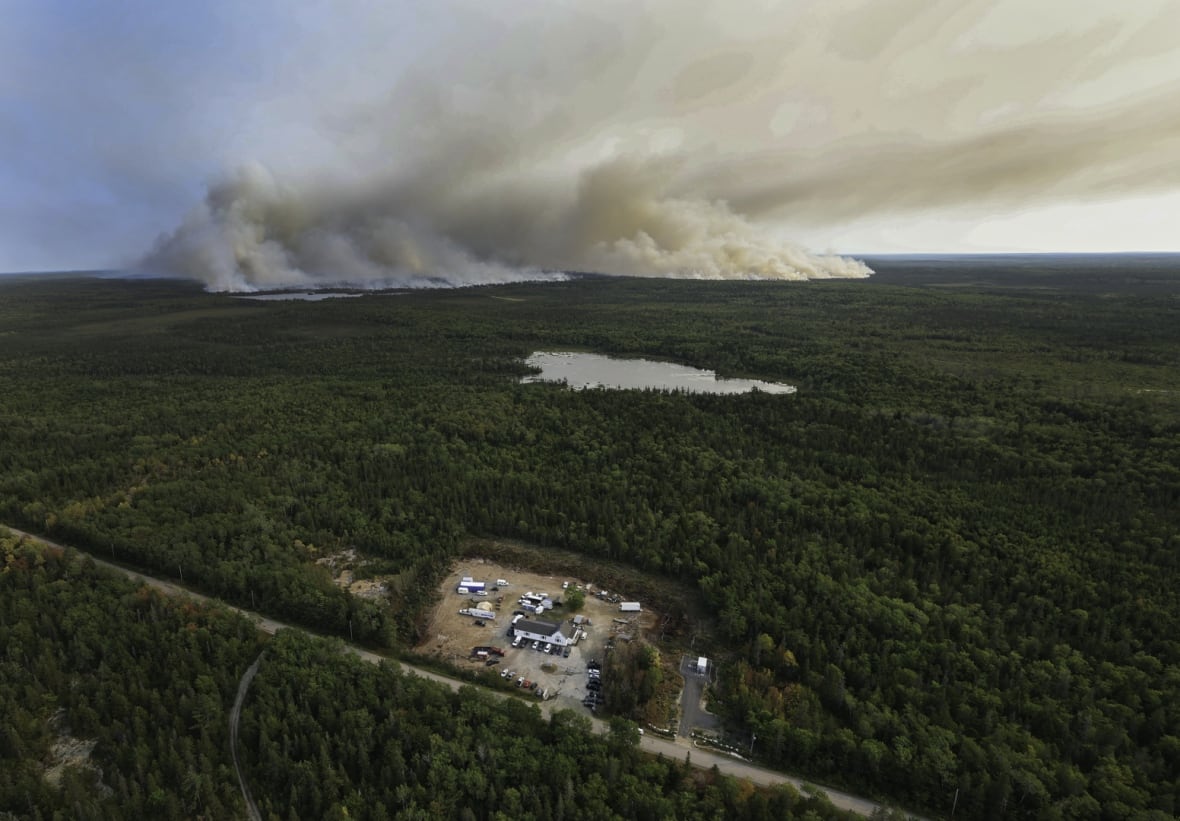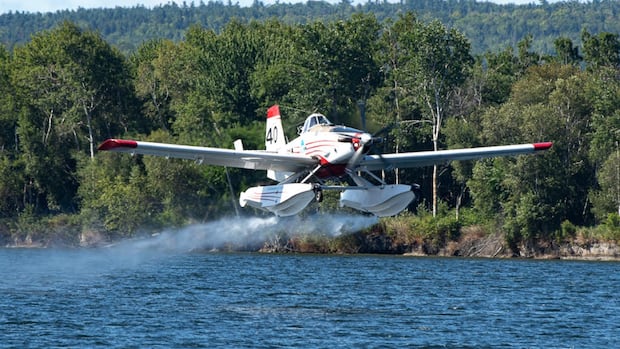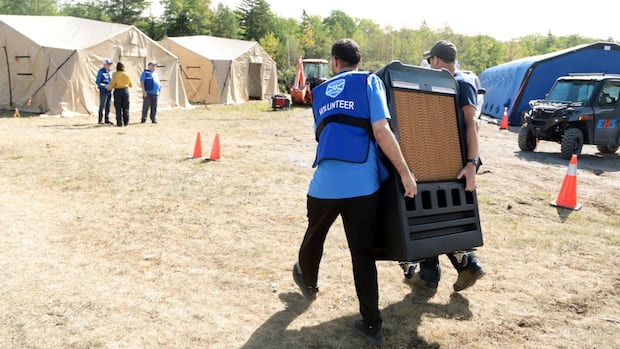Nova Scotia’s Department of Natural Resources says an out-of-control wildfire burning in Annapolis County did not grow overnight and crews are making good progress.
The Long Lake wildfire near the community of West Dalhousie is estimated to be 3,210 hectares, roughly 32 square kilometres.
At a news conference Tuesday afternoon, the province provided an update on the fire and suppression efforts.
Scott Tingley, manager of forest protection, said crews have focused most of their energy over the last 24 hours on securing the area where the fire crossed West Dalhousie Road.
“That is one of the areas of most concern right now,” he said. “When the winds do eventually shift back from the south, that end of the fire … is where the nearest homes and values to be protected are.”
Tingley said that although winds have been “relatively favourable” since Monday, he expects there will be some challenging days between now and Sunday as winds grow more volatile with the approach of Hurricane Erin.
He said his department has been receiving constant updates on the storm’s progression, which CBC News has reported will bring wind and strong waves to the Atlantic region, but will likely be too far offshore for rain.
“Where there’s no rain in the forecast, it’s still going to take significant effort … to get it to a being held or under control status,” he said. “We’re making progress but we still have a ways to go.”
There are still no reports of damage to homes, but some property — including campers and trailers — has been destroyed.
Officials have evacuated 107 homes in the West Dalhousie area, affecting roughly 215 people.
Dustin Enslow, the deputy warden of the Municipality of the County of Annapolis, said he was encouraged by Monday’s progress.
“It was a bit of a relief considering the day before was one of the worst days we had since the beginning of the fire. So it was a bit of a good-news story,” Enslow told CBC Radio’s Information Morning Cape Breton on Tuesday.
“The only downside is that we’re not predicting rain for the next short period of time.”
According to Environment Canada, there’s no rainfall in the forecast until Monday, when there’s a chance of showers.
Enslow said sprinklers that have been deployed at nearby homes have been very effective. They create a constant stream of water that mimics rain, which helps prevent falling embers from sparking a fire, he said.
“It’s really the first time it’s been utilized at this capacity in Nova Scotia,” said Enslow, adding that at least two sprinklers are in use at each home.
“It’s been a couple days since I’ve been out to the site but when we were out there it was nice to see all the houses look as if they’re being rained on.”

As of 1 p.m. Tuesday, there were 93 Department of Natural Resources firefighters on the ground, plus 25 local firefighters and 22 from Ontario.
There are also four planes from the Northwest Territories and one helicopter helping fight the fire.
Nova Scotia Premier Tim Houston said Monday that three more helicopters were on the way from Saskatchewan.
He said the province has no plans to purchase a fixed-wing water bomber, but that may change in the future.
“We’re concerned about the fires. We’re concerned about the frequency of them, so we want to make sure that our teams have the best possible assets to fight them,” Houston said.
“It could be that as we go forward … that’s a part of it, but it’s an evaluation right now. We’re fighting the fires with everything we have.”
As the Long Lake fire continues to burn out of control, Nova Scotian organizations show their support for people who have been displaced. Meig Campbell has the story.
A news release from the Annapolis Regional Emergency Management Organization said the evacuation reception centre and shelter at the Annapolis Valley campus of the Nova Scotia Community College in Middleton will now operate daily from 8 a.m. to 8 p.m. local time.
The centre provides evacuees with meals and access to facilities including showers and laundry, and serves as a supply pickup location.
On Friday, a helicopter crashed into a lake while helping fight the wildfire.
A statement from the Transportation Safety Board of Canada on Saturday said the pilot of the Airbus AS 350 B3 had minor injuries.
“We are currently gathering data and information on the occurrence, while assessing the next steps,” the statement said.
Environment Canada’s air quality health index forecasts a low risk for much of the province for Tuesday. It has issued special air quality statements for Annapolis and Queens counties.
Nova Scotia’s wildfire dashboard says there are three active wildfires in the province. Long Lake, which started last Wednesday, is the only one listed as out of control. One small wildfire in Digby County and the Bayers Lake fire in Halifax are both considered under control.








